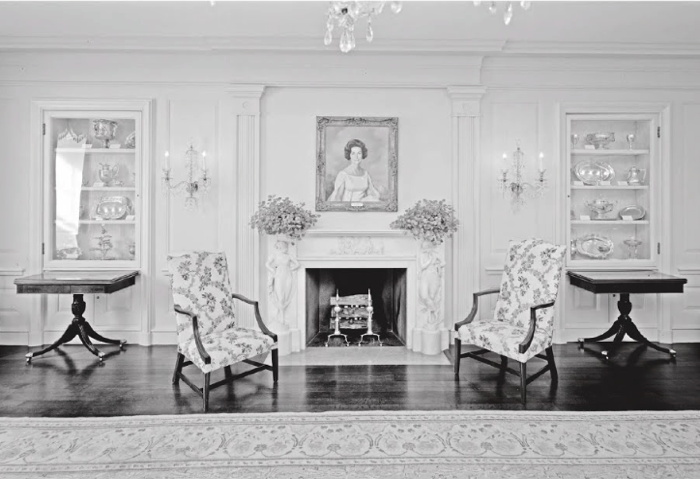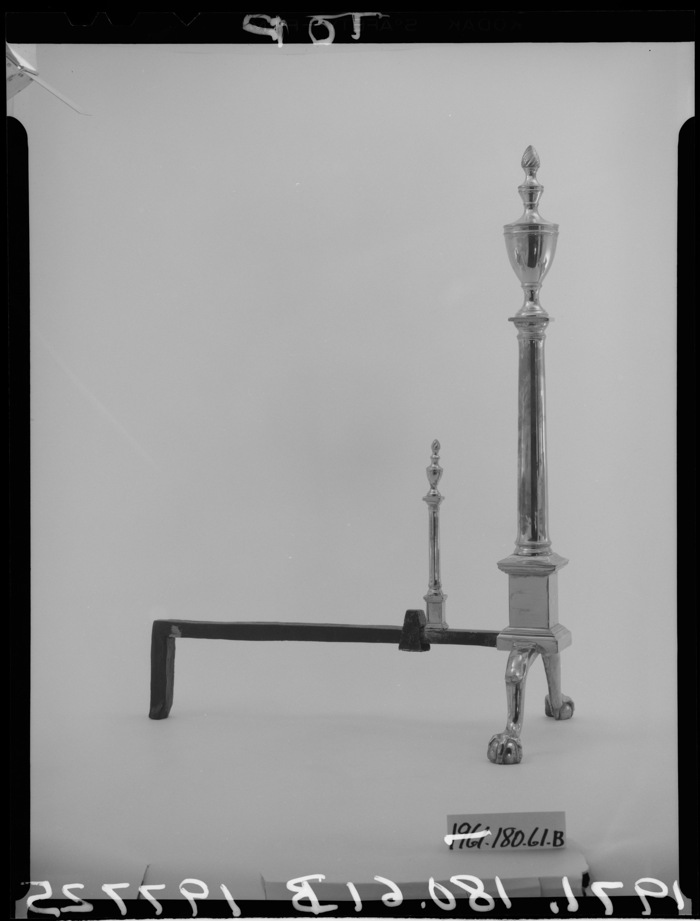
The Vermeil Room in the White House as redecorated by Pat Nixon’s plumbers, photo c.1992, LOC via Phillips-Schrock
The White House needed renovation and redecoration, and the Nixons were determined to put their mark on the place. By 1969, the French interiors commissioned by Jacqueline Kennedy were worn from use. Also they were detested by politicals as reminders of a martyred rival. H.R. Haldeman and new White House curator Clement Conger set out on an aggressive fundraising effort to remake the White House and its collections, a campaign publicly led by the First Lady Pat Nixon. The period room-style appearance of the White House to this day largely reflects Mrs Nixon & co’s work.
Based on my Google Books previews of it, this story of “the Dismantling of Camelot” is meticulously told by Patrick Phillips-Schrock in his 2016 book, The Nixon White House Redecoration and Acquisition Program: An Illustrated History.

Vermeil Room a la Boudin, c. 1964, image: whitehousemuseum.org
Phillips-Schrock’s account of the 1971 redecoration of the Vermeil Room on the ground floor of the White House is representative. From a caption of a photo of Boudin’s Kennedy-era design: “The room was expensively finished in painted surfaces in blue and white with vitrines lined in white silk. Conger found it offensively French…” [p.74]
From an interview with Conger: “What we have done in ‘face-lifting’ the Vermeil Room is to change the room from a very dark blue–which is rather depressing–to a light green-gray, the appropriate color as the background for vermeil, which is gold. You use blue with silver, but never such a dark blue!” [p.76]
The room was reconceived as an early 19th century sitting room, with a table at the center “attributed to the workshop of Duncan Phyfe, it was on loan until a donor could be found to purchase it.”
An 18th century lighting fixture in crystal with 10 lights replaced the Kennedy chandelier of bronze and blue tole. Further lighting was supplied by four matching sconces and by two candlesticks given by Mrs. Marjorie Meriwether [sic] Post, which were placed on the mantel. The fine Louis XVI marble fireplace was acquired and installed in 1962. [not too offensively French, I guess. -g.o] Within the firebox were a pair of valuable brass andirons, obtained from Israel Sack of New York. When the room was opened to the public, Conger related, “These are American andirons, so called ‘in the Paul Revere Manner’ with the flame and diamond lozenge–except they are a little more petite and narrow than the heavier ones of this same design one generally sees.” [p. 77]
The andirons abide.

American Andirons in the Vermeil Room, c.2008, image: CSPAN via whitehousemuseum.org
I mention this because I just googled across it. And because 1971 was a busy year for well-provenanced, Paul Revere-ish andirons. It was the same year Mrs. Giles Whiting bequeathed her Paul Revere (Attributed) andirons to the Metropolitan Museum. Interestingly, Mrs. Whiting’s Revere-ian andirons did not have a diamond and flame, but an urn and flame finial. Actually, I don’t know if that’s really interesting at all. Maybe what’s interesting about andirons is not the things themselves, but the complicated narratives into which they are enlisted.

Previously, related: Untitled (Andiron Attributed To Paul Revere Jr.), 2014 [greg.org]
